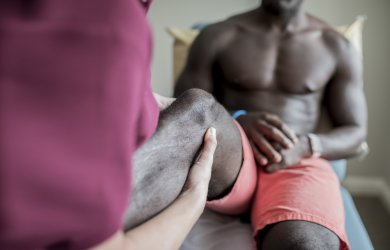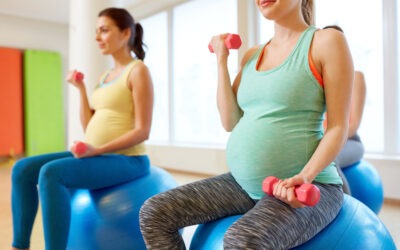As we bring you exciting news of our impending move, it seemed relevant to make this newsletter all about movement. After all, as physiotherapists, functional movement is our bread and butter. We work to restore and maintain normal movement to prevent and alleviate pain, improve function and even excel in sport. But movement is essential for life itself, for without it we would not breathe. As physios, podiatrists and sports coaches, we all look at movement in different ways. This month we are giving you a snapshot into how we assess movement.
Our Move
After seven fantastic years at Heather Court, the time has come to make the change and move to new premises. Having outgrown our current location over the last couple of years we looked for a position that would offer us potential to grow whilst staying central in Doncaster. We are delighted to announce that in May, we shall be moving to 154 Thorne Road where our new practice will have five treatment rooms, a gym and shower facilities… not to mention much more parking and a bus stop conveniently placed outside! Work on the project is currently underway and we hope to be moving late Spring 2017.
Your Movement
How often do you hear someone say ‘just stop doing that if it hurts’ rather than address the possible dysfunction? As physios, we believe that quality movement should be pain free. Subtle changes to how you move can make significant differences. Using adjuncts such as KT tape can assist postural correction but the only person who can really make that change is you! So, why should you stop doing something just because it hurts?
Using an example of a lunge, it is easy to see how wrong technique can quickly lead to pain. When performing this exercise, the front knee shoulder be in line with the foot throughout the movement. Frequently, this control is lost during the descent phase with the knee tending to fall inwards. This can be identified as a ‘wobble’ or loss of balance to a more obvious abnormal movement pattern. Over time, as the knee rolls inwards, the ilio-tibial band (ITB) down the outside of the thigh acts as a control to the movement. This leads to a tightness and pulling on the kneecap, leading to pain either in the front of the knee, or even on the outside of the hip when the ITB causes friction.
So how would a physio approach this? First we would ask you to describe your symptoms, when they started and what activities aggravate them. This may give us an idea of what may be causing the problem and we will then look to prove or disprove our hypothesis. Next, we will assess the joint to evaluate range of movement, and perform any relevant clinical tests. A functional demo is an example of the specific movement or activity that causes your symptoms. This can help us to identify if it is a learned habit that is causing the problem. For example, in the case of the lunge, if the knee is falling inwards, it may suggest weakness around the hip; or lack of foot posture. From our findings, we can further assess muscles which we suspect are tight, weak or just not in the correct position to perform optimally. This gives us the opportunity to prescribe rehabilitation exercises to correct the movement dysfunction, thus relieving the symptoms and preventing a recurrence in the future, assuming the correct movement is maintained!
Sport Specific Movement: Focus on Swimming
Attending another annual swimming seminar reminds you just how important perfect movement is within swimming. Working with elite swimmers exemplifies what a disciplined sport it really is and if some of that focus can be directed at maintaining good movement patterns, injury rates can be massively reduced.
Screening can help us to identify muscle tightness and dysfunction but takes time and requires regular reviews. But what if we could assist you to self-manage and prevent problems before they occur? We know through research and audit of training that poor movement technique leads to reduced outcomes and pain.
Here are three exercises that help to maintain mobility for swimming:
Mountain Climbers: A whole body exercise; starting in the plank position, keep your hips low and run on the spot. A great land-based warm up, incorporating range of movement, isometric holds at the shoulder and dynamic movement of the legs.
- Glute bridge: Lie on your back with knees bent and feet on the floor. Activate your core muscles, lift the pelvis, keeping the lower back in a neutral position. This exercise will activate your glutes, whilst maintaining core control. The difficulty can be increased by performing the exercise single leg.
- Thoracic rotations: Start in four point kneeling, bring your arm out to the side with elbow bent. Drop the elbow rotate through underneath the body. Take the elbow out and rotate up towards the ceiling. The head should follow the elbow. A fantastic thoracic mobility exercise, a movement essential for swimming.
Staff Moving On and Moving In!
Unfortunately March saw Steve Chadwick-Higgins move on to pastures new in the Lake District where he hopes to give his hands a rest from manual therapy as he assumes a triage role for the department of Work and Pensions. Steve said that he had thoroughly enjoyed working as part of the team here at Chapman Physiotherapy but was ready for a new location and it was simply too far to commute! Likewise, April will see Jack Geraghty move to New Zealand as he commences his year out of physio in favour of a world tour! We certainly can’t compete with that!
However, we are delighted to introduce three new physios to the team. David Bailey, Matt Kirk and Dan Smith have all recently joined us and have made a great start. Find out more about them at www.chapman.flywheelsites.com
Appointments can be booked with David and Matt daytime or evening with Dan offering a Monday and Friday evening service.


